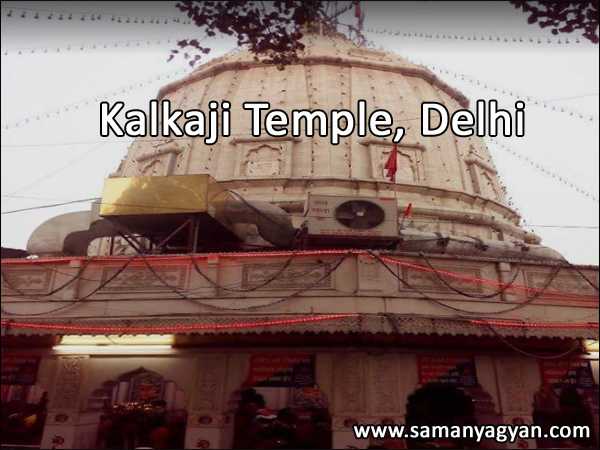Kalkaji Temple Quick Facts
| Place | Kalkaji, New Delhi (India) |
| Built in | 18th century |
| Built by | Balak Nath (present structure) |
| Architectural style | Hindu temple style |
| Type | Hindu temple |
Kalkaji Temple Overview
Kalkaji Mandir is a Hindu temple located in Kalkaji area, not far from Nehru Place Market, New Delhi. Situated on a small hill on the way to Okhla, this temple is one of the most visited ancient and revered temples in India. This temple is dedicated to Mata Kali, an incarnation of Maa Durga.
This temple is also known as Manokamna Siddha Peeth. Located near the Lotus Temple in the southern part of the country's capital Delhi, this temple is one of the oldest Siddhapeeths in the country.
Kalkaji Temple History
Located near Nehru Place, Temple was constructed in the 18th century. The existing temple was built by Balak Nath. In the middle of the 19th century, some changes were made to the temple by King Kedarnath and Emperor Akbar. It is believed that at this place, the mother appeared in the form of Mahakali and took care of the demons.
According to the Mahabharata, at the time of the establishment of Indraprastha (The ancient name of Delhi), Lord Shri Krishna and Maharaj Yudhishthira, along with all the Pandavas, worshiped the mother in this Siddha Peeth situated on the Suryakuta mountain. It is believed that after winning the war of Mahabharata, Maharaja Yudhishthira again worshiped and performed Yagya here. The temple has been expanded several times over the past 50 years, but the oldest part of the temple dates back to the eighteenth century.
Kalkaji Temple Interesting Facts
- This Temple built in a modern way is 8-sided, which is made of white and black marble stones.
- Kalkaji Temple is situated at a distance of just 14 km from Old Delhi.
- This Temple has 12 main gates, which indicate 12 months. Very beautiful depictions of different forms of mothers have been made near each gate.
- Surrounding the sanctum sanctorum of the temple is a verandah with 36 arched passages.
- An Ancient Shivling is also installed in the temple. An attempt was made to shift it from here and it was dug for about 96 feet but could not succeed in shifting the Shivling.
- There is also a 300-year-old historical Havan Kund inside the temple and even today Havans are performed there. No changes have been made in the form of the Havan Kund, but the area around it has definitely been expanded.
- Inside Temple, the makeup of the Mother is changed twice a day. In the morning, along with 16 adornments, 2 flowers, clothes, etc. are worn by the mother, while in the evening, from ornaments to clothes are changed in the makeup.
- This Temple was briefly occupied by the Maratha Peshwa Bajirao (I) in the year 1737 during the reign of the then Mughal emperor Mohammad Shah.
- Even in the year 1805, Jaswant Rao Holkar had camped in the courtyard of Kalkaji temple while attacking Delhi.
- This Temple was an active center of Hindu activities even during the war of 1857 and the Indo-Pak partition of 1947.
- The temple is decorated with 150 kg of flowers every day during Navratri. Many of these flowers are exotic.
- A special feature of this temple is that during Navratri, the doors are opened after the morning aarti on the day of Ashtami and there is no aarti for two days, after that the aarti is performed on the tenth day.
- In the last 5 to 6 decades, many Dharamshalas have also been constructed around the temple.
- About one and a half lakh devotees from all over the country and abroad visit this temple during the annual Navratri festival held in October-November.
- Kalkaji Mandir Metro Station situated on the Badarpur Metro Line is the nearest metro station to the temple, from where people can easily reach on foot.

